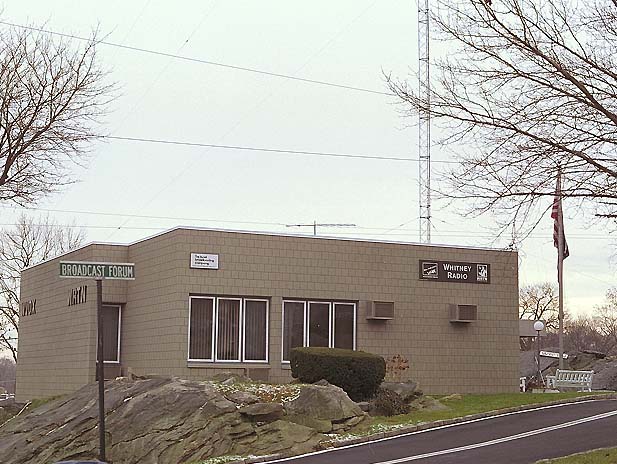
MW Communications Systems |
||||
Here's a tour of one of my recent project stations. Last spring, the management of Whitney Radio wanted to modernize their facilities. Since the station is affluent and very active, the budget was generous and we could have the opportunity to "wipe the slate" and build everything new from scratch, the right way for the 1990s.
 |
| Located just off North Avenue in the heart of New Rochelle, NY, here is the first sight of Whitney Radio's home, as we turn onto Broadcast Forum. |
 |
The parking lot and main entrance. I just love the classiness of the canopy! |
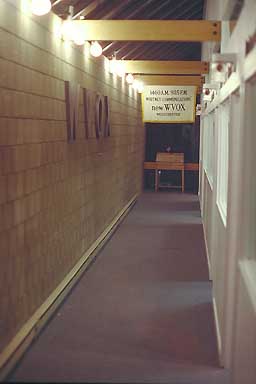 |
The hallway that connects WRTN-FM and WVOX-AM and their associated production studios, plus a "community" studio where guest hosts broadcast, or interviews with larger groups of people take place. Skylights overhead make this place a cheerful environment by day. |
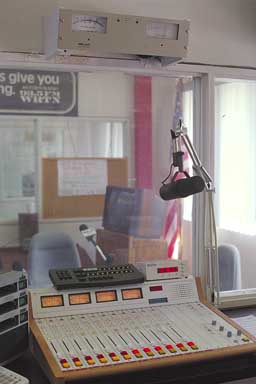 |
Here we are at last in AM Control. The new board which I installed here is the Audio Arts R-60. It's quite flexible and features a lot of programming options as well as modular design for ease of service while on the air. Above is the Telos keypad for the Telos digital telephone hybrid system, which is the best-sounding hybrid I've ever heard. A Radio Systems clock appears to the right. We're using Shure SM-7 mics, which sound warm and have a pleasing overall tone. And what do we do with that modulation monitor? Management wanted it out of the way, so I made some wooden "ears" and mounted it above the window. View through the window is the community studio. |
 |
The equipment rack in the WVOX Air Studio/Control Room. A dual cassette deck for recording air checks, the Telos digital hybrid, power supply for the Audio Arts board, and a Crown amplifier for driving the monitors. Woodwork was done by a local firm, at a fraction of the cost of buying "broadcast furniture". |
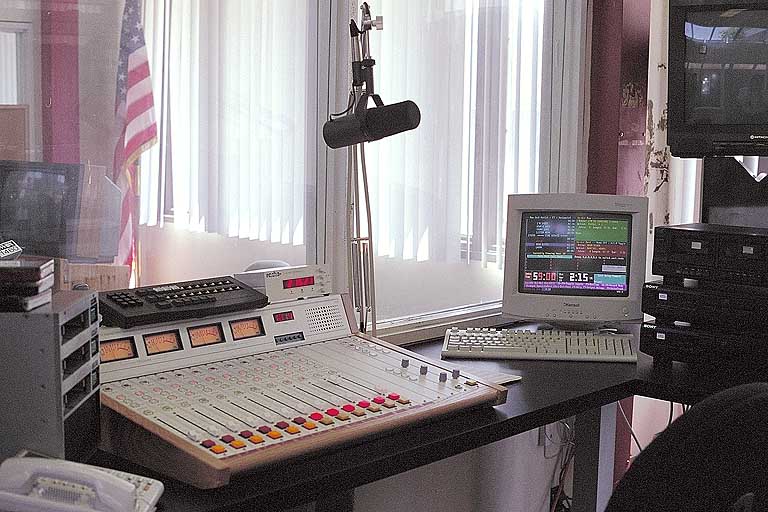 |
| The grand view of the WVOX Control Room. Now this is how radio SHOULD be! Note the veteran ITC triple decker cart machine at left. The computer is running Jim Barcus' The Digital Jukebox software, which, after some initial setup/ programming, has been 100% reliable. Tape deck and two CD players sit in a stack to the right. The owner of the station insisted on having a television set in every studio! |
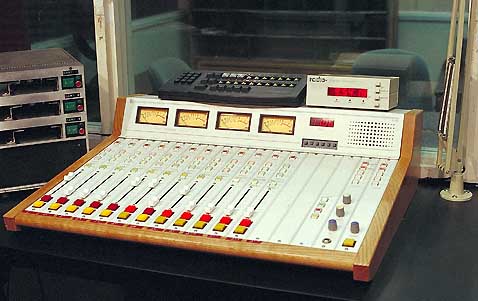 |
Closeup of the R-60 in AM Control. |
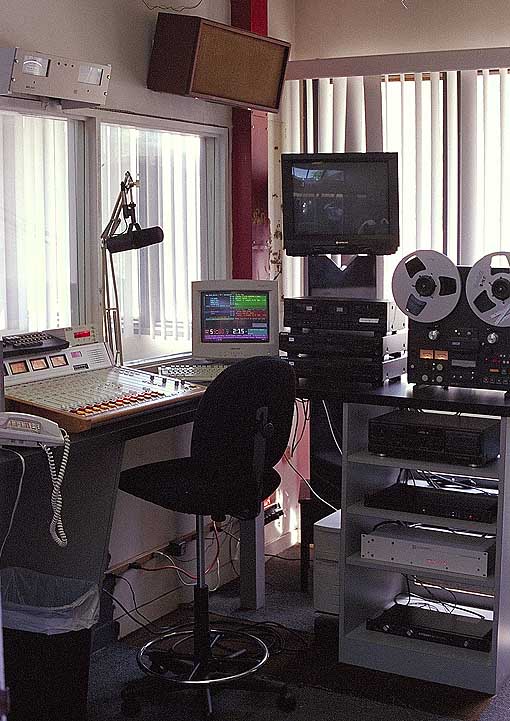 |
The wide angle view of the WVOX control room. We also see the newer Otari reel deck. This photo was taken before I replaced the monitor speakers with the ones you'll see in AM Production, a pair of Yamaha NS-10s, which were highly recommended by many recording industry pros and seem to have gained a reputation as a reference standard. I found them a bit pricey and shy of bass response below 80hz, but everyone likes them so much that I accepted that limitation. |
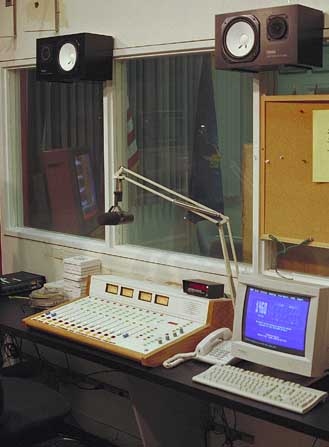 |
Here we see AM Production and the Yamaha NS-10s. This studio uses the less expensive Audio Arts R-5 mixing board. It has an integrated phone pot, which is nice, but servicing is a pain. There are no plug in modules and the entire board must be serviced from the underside. To the right, is The Digital Jukebox, which is networked to the other system in AM Control. Window looks into the Community Studio from the other direction. |
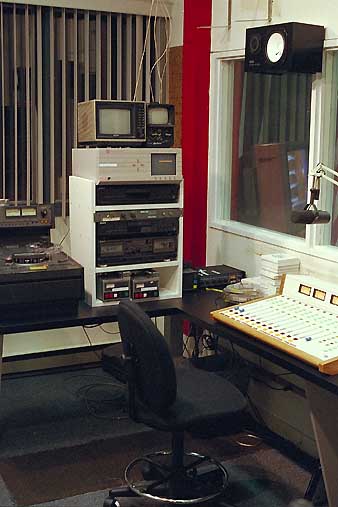 |
More of AM Production, the wide view. The usual stuff, cart machines, tape decks, CD players and a Gentner SPH-3 hybrid which we use for general soundbites and recording interviews. The computer at the top of the stack has been replaced with a Digital Courier since this photo was taken. |
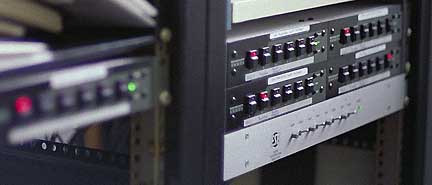 |
In our Automation room, I just added these Broadcast Tools Switchers. They replace what was once a massive tangle of patch bays and wires. Just below them is a distribution amplifier which routes the outputs of the switchers to all the studios. Flexibility was the objective: we wanted to be able to broadcast from any studio, and for any studio to have access to any signal source in the building. And we succeeded! |
 |
Miles and miles of wires! I look back at this and still can't believe that I wired this whole operation myself! It took nearly three weeks to complete the wiring through the entire building. Many thousands of feet of multi-channel cable had to be snaked through ceilings and raceways over considerable distances. It was hard work, but now that it's done, I won't have to worry about it for another 20 years or more. |
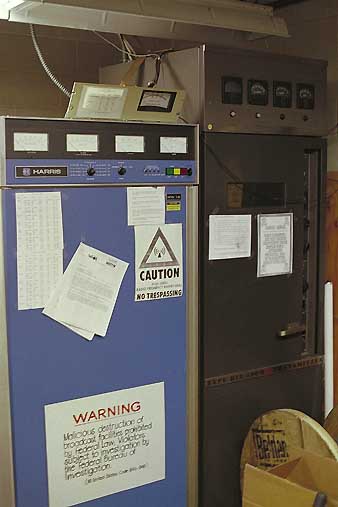 |
The business end of it all. Here is our Harris MW-1 transmitter and next to it, the backup RCA-BTM500. They both work! |
And finally, I dug up some old photos of the WVOX studio BEFORE renovation began. Here they are. Brace yourselves...
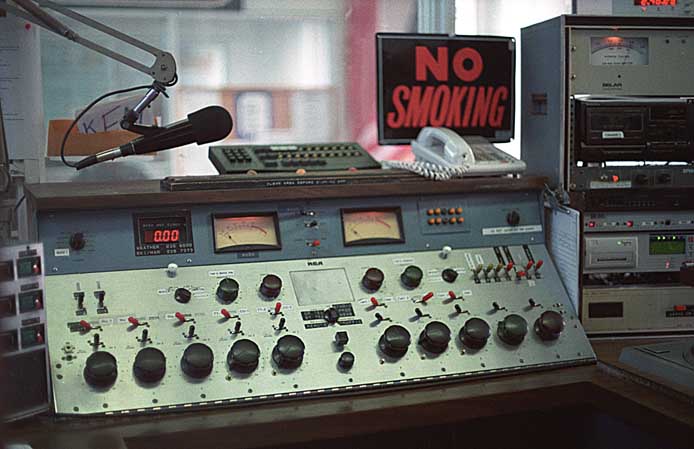 |
| Here is the old AM Control studio board from RCA! |
 |
| View of the old studio and rack. And even a turntable! |
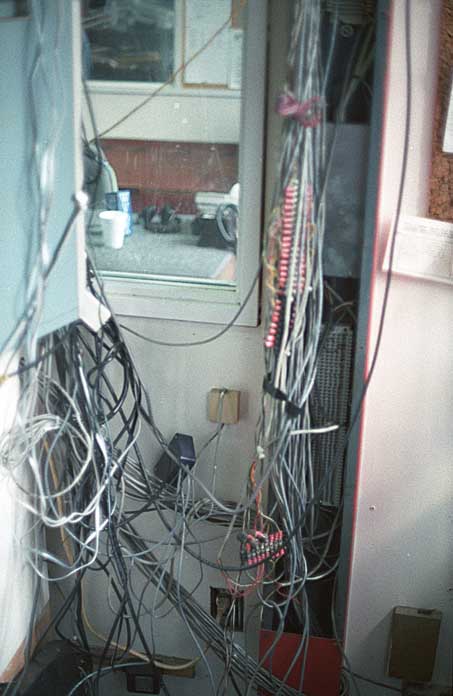 |
The wiring mess that I faced before the task of renovating began. |